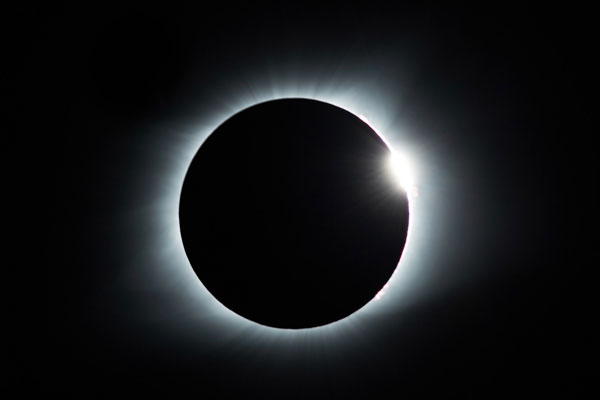A total solar eclipse arrives in North America for the first time in 7 years

[The total solar eclipse. Photo Credit to Unsplash]
On April 8th, a total solar eclipse was observed in North America for the first time in seven years.
The complete total eclipse was observable in regions including Mexico from Sinaloa to Coahuila, United States from Texas to Maine, Canada from Ontario to Newfoundland.
Residents of Mazatlan were the first to witness it at about 2:10 PM local time in New York and it completely ended at about 3:40 PM.
A solar eclipse occurs when the Moon aligns directly between the Sun and the Earth and they line up straight.
So the shadow of the Moon is cast on the Earth, covering the sunlight from the Sun. In the area, where shadow casts form the Moon, can observe solar eclipses.
On average, solar eclipses usually occur about six times within 1-2 years, and among them, total eclipses occur about ⅓ , which means about once in every 1-2 years.
However, most of them were observed in remote places, such as along the ocean or Antarctica.
Therefore, the April solar eclipse was special because people could see it in North America, where many people live and cities were located.
The solar eclipse traveled diagonally –from Eagle Pass, Texas in the southwest towards the northeast, and it has moved about 185 km.
Unlike other typical solar eclipses, which last for 2 to 3 minutes, this total eclipse lasted a total of about 4 minutes and 28 seconds.
The last solar eclipse in North America occurred on August 21th in 2023, so it occurred for the first time in seven years, so an influx of people went to New York and other North America regions.
To observe the eclipse safely, people placed mats on the ground, set up camping chairs and wore solar eclipse glasses that protects eyes while seeing the sun, before the eclipse began –2 PM in local time.
Some enthusiasts traveled great distances, such as a man who drove for 6 hours and 30 minutes from the state of Connecticut to Virginia in order to observe this phenomenon.
In Virginia, where a solar eclipse observation was predicted, schools replaced afternoon classes with eclipse observation and excused students to leave early to observe it.
The science field also focused on this solar eclipse.
The renowned academic journal Nature predicted that the corona, the outermost of the Sun's atmosphere, would be much more complex during this eclipse.
In addition, the astronomy field showed a huge interest due to the large appearance of Bailey’s Bead’s phenomenon, where sunlight shines through the moon's bumpy surface.
Solar eclipses occur when the apparent sizes of the Sun and Moon match from the Earth’s perspective.
However, in the future, as the moon is gradually moving further and further away from the Earth, it will no longer be able to block the sun, making it difficult to observe a total solar eclipse.
Therefore, observing a solar eclipse is a valuable experience. In Korea, it will be possible to observe a total solar eclipse on September 2, in 2035, 11 years from now.

- Sarah Kim / Grade 11
- Seoul Scholars International Art and Design

![THE HERALD STUDENT REPORTERS [US]](/assets/images/logo_student_us.png)
![THE HERALD STUDENT REPORTERS [Canada]](/assets/images/logo_student_ca.png)
